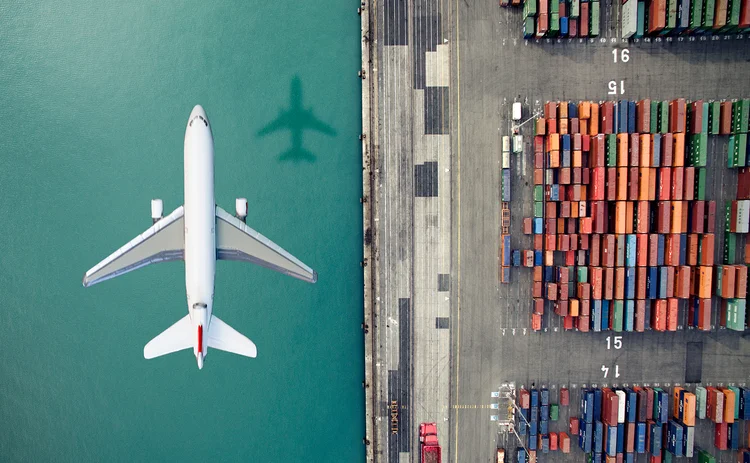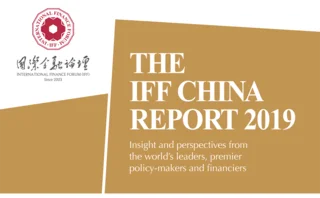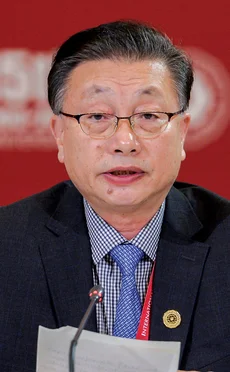
Made in China – The new globalisation


The Silk Road International Association (SRIA) was inaugurated by former major policy-makers, financial experts and scholars from countries involved in the Belt and Road Initiative (BRI) in 2016 at the 13th Annual Conference of the International Finance Forum. International and domestic private capital has also played a crucial role from the beginning.
The establishment of the SRIA has injected new vitality and vigour into the BRI. Over the past three years, the SRIA has become increasingly influential in building pragmatic co-operation and fostering financial strength. Yet global economic growth and the development of globalisation face strong headwinds. The SRIA’s mission and responsibilities are particularly important, and its march forward will be long and arduous.

In the second half of the 20th century, globalisation enjoyed explosive growth in trade, production, finance and labour thanks to the rapid development of the IT revolution and the widespread dissemination of value chain theory. The interactions and mutual influence powerfully unified the global economy and finance. Globalisation established an efficient international division of labour, realised the optimal allocation of production factors, promoted the integration of international interests, accelerated the trend of a multipolar world, strengthened the development of international organisations and reshaped the global governance system.
Traditional economic globalisation, however, also has its drawbacks: above all, the way in which it distributes its benefits inequitably. Some developed countries have dominated the traditional process of globalisation yet failed to manage relations between the interests of their own sovereignty and the global public interest. In the wake of the 2007–08 financial crisis in particular, global economic growth lacked momentum, economic globalisation slackened and – even worse – anti-globalisation emerged. Influenced by such slogans as “America First”, trade protectionism and unilateralism sprang up. The global governance system, without an overarching global economic and political order, could not keep abreast of this development.
Shaping globalisation features
Anti-globalisation has occurred only regionally and sporadically, although its negative impact on the global economy should never be underestimated. Economic and financial globalisation may have changed, but it remains irreversible. Emerging economies now have a greater impact on its progress. For example, the Asia-Pacific region shows the greatest potential in its strong desire for development, openness and co-operation, and it is widely recognised as the current engine of global growth. The multilateral trading system brings common opportunities to all countries. As countries become increasingly interdependent, the global supply, industrial and value chains become closely intertwined, forming a community with a shared interest and future for mankind.
Following the path of a new type of globalisation is the right choice. Emerging economies, including China, have contributed to this new incarnation of globalisation, helping its features take shape: equal-footed co-operation for mutual benefit and win-win outcomes for all countries, greater tolerance of global trade and investment, innovation-driven development for new growth points, balanced development for a multicurrency pattern, and inclusivity and openness for fairer and more reasonable global governance. The SRIA values the following aspects in shaping the new type of globalisation:
1. A Chinese template. To develop green and inclusive finance, enhance financial credibility and facilitate new globalisation, China must demonstrate better performance in different financial dimensions: greater financial capital, more advanced financial technology, more comprehensive regulation, improved infrastructure and continuous financial innovation. We can surely deliver positive energy to globalisation by setting out on the right path, assembling and drawing on past experience and delivering positive effects. China must always put honour and integrity at the forefront of international co-operation; adopt a people-oriented, Silk Road-based concept; and create more professional, convenient, efficient and first-class green financial services. The SRIA should offer suggestions for a safer, fairer and more prosperous BRI economy by using its wisdom and academic power.
2. Leveraging the Silk Road Economic Belt. Concentrating on the key areas of industry, trade and infrastructure, China should direct international financial institutions to add impetus to the Silk Road Economic Belt and socioeconomic development in accordance with the five connectivity principles of policy, infrastructure, trade, finance and people. The Silk Road Economic Belt, with a population of nearly 3 billion, boasts large market scale and potential. The countries along the BRI adhere to the spirit of peace, friendship, openness, inclusiveness and mutual benefit in multilateral and upper-level exchanges, and fully demonstrate their strong aspirations for development.
The Silk Road Economic Belt is the longest and most promising economic corridor in the world; to its east stands the Asia‑Pacific economic circle, and to its west the developed European economic circle. Nevertheless, the region through which the Silk Road Economic Belt winds is challenged by poor transportation, a disadvantaged natural environment and uneven economic levels.
To ensure the healthy and sustained development of the Silk Road Economic Belt, the SRIA should make full use of financial leverage, especially in emerging economies. It is imperative that it actively encourages and assists international financial institutions to engage in the development of industries, trade and infrastructure in countries along the Silk Road Economic Belt. The SRIA should also strengthen financial co-operation, including in currency circulation, currency swaps, clearing systems and the settlement of local currencies. Harder work is needed to optimise the allocation of production factors, and continued efforts must be made to promote trade and investment facilitation, deepen economic and technological co-operation, and map out free-trade zones.
3. Technology counts. An important task at this time is to follow the rapid development of new technology represented by big data, the internet of things, artificial intelligence, quantum information and genetic technology. Technological innovation has made the earth smaller. While multinational corporations have linked the world with industrial chains, pursued their interests to the maximum and optimised resource allocation, the contrast between prosperous and declining regions and industries remains remarkable. Prominent capital discrepancies remain, and the income distribution gap is widening. The current global governance system trails behind the process of economic globalisation and cannot stay abreast of the development of science and technology. Its future challenges include creating a fair financial playground and more institutionalised financial system, innovating financial services and products, formulating financial regulations, and forging balanced, inclusive and win-win development.
4. Personnel resources. Former Chinese nationals, Chinese citizens and Chinese students living abroad are three indispensable talent resources. They can steer international financial institutions towards helping financial enterprises to serve the real economy and financial capital to assist industry transformation, and upgrading financial industry to advance economic development.
There are more than 50 million Chinese citizens and former Chinese nationals living abroad throughout the world, including more than 40 million in 66 countries along the Belt and Road. In 2017, the number of Chinese students studying abroad exceeded 600,000 for the first time. This talent has advantages: familiarity with international societies and cultures, resource endowments, laws and regulations, cultural and historical development, and economic and social development of the country in which they live or study. This group has played an important role in taking Chinese companies global, and connecting China with the world economy in the process of China’s reform and policy of ‘opening-up’. With a wide range of political contacts, good communication channels in host countries, and fine industrial strength and social networks, their important role – once maximised – can generate unprecedented positive energy. They can connect finance to the real economy, give feedback by hearing public opinion, explore the financial channels for product implementation, provide policy consultancy and advice on how finance can create wealth, and serve as a financial think-tank to offer financial services.
Expo of the future
Last year marked the 40th anniversary of China’s reform and opening-up. President Xi Jinping attended four consecutive major diplomatic activities hosted by China, where he elaborated on the concept of the community with a shared future for mankind, provided Chinese wisdom and added China’s impetus to global development. The inaugural China International Import Expo (CIIE) in autumn 2018 aimed to intensify a new round of high-level opening-up, and epitomised China’s decision to open its markets to the world. From 151 countries and regions, 3,617 enterprises participated in the expo, with the cumulative signed deals and intentions of the countries along the BRI totalling US$4.72 billion. The success of the CIIE proves that, despite trials and tribulations in the process of BRI development, the road towards the new model of globalisation still displays great promise.
Only users who have a paid subscription or are part of a corporate subscription are able to print or copy content.
To access these options, along with all other subscription benefits, please contact info@centralbanking.com or view our subscription options here: subscriptions.centralbanking.com/subscribe
You are currently unable to print this content. Please contact info@centralbanking.com to find out more.
You are currently unable to copy this content. Please contact info@centralbanking.com to find out more.
Copyright Infopro Digital Limited. All rights reserved.
As outlined in our terms and conditions, https://www.infopro-digital.com/terms-and-conditions/subscriptions/ (point 2.4), printing is limited to a single copy.
If you would like to purchase additional rights please email info@centralbanking.com test test test
Copyright Infopro Digital Limited. All rights reserved.
You may share this content using our article tools. As outlined in our terms and conditions, https://www.infopro-digital.com/terms-and-conditions/subscriptions/ (clause 2.4), an Authorised User may only make one copy of the materials for their own personal use. You must also comply with the restrictions in clause 2.5.
If you would like to purchase additional rights please email info@centralbanking.com test test test







